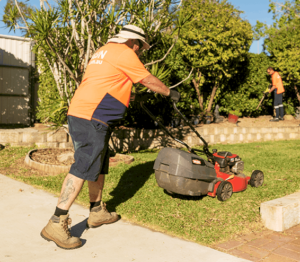The right lawn service will keep your lawn looking lush and green. These professionals can identify lawn problems before they become a problem and can prescribe remedies. This will save you time and money, as well. Here are some of the common lawn problems and how to deal with them. These problems are caused by a lack of knowledge of lawn care. Here are some tips to keep your lawn healthy and beautiful. If you have any questions, feel free to contact us!
 Besides enhancing the look of your property, lawns are an excellent investment for your home. Not only do they look good, but they also improve the value of your home. Good lawn care can help you reap the benefits of your investment when you decide to sell it. However, not everyone has the time or resources to do this themselves. And some may not even know where to start! In such a situation, the right lawn maintenance service can be the perfect solution.
Besides enhancing the look of your property, lawns are an excellent investment for your home. Not only do they look good, but they also improve the value of your home. Good lawn care can help you reap the benefits of your investment when you decide to sell it. However, not everyone has the time or resources to do this themselves. And some may not even know where to start! In such a situation, the right lawn maintenance service can be the perfect solution.
Pests that attack lawns can also be a problem. Sod webworms and grub worms are two common pests that can destroy your lawn. These pests are particularly harmful if left uncontrolled. Look for signs of infestation such as wilting or excessive feeding activity. If the infestation is severe, you may have to hire a professional lawn care service to remove the infestation. If your lawn is infested by grubs or other pests, it is best to call a professional lawn care service for help.
Aeration is another common practice in lawn maintenance. It breaks up compacted soil and allows water to reach the roots. Aeration is especially important in areas with high foot traffic. A core aerator or spading fork is an ideal tool for this job. A spading fork is also a useful tool to loosen up the soil on your lawn. You should fertilize your lawn after aerating.
Fertilizing your lawn is particularly important in the northern third of the country. Winter has deprived grass of nutrients, so it stores them deep down in the roots. Once spring warms up the ground, the grass will be ready for a jump start. In the spring, fertilizing is also necessary. It is important to water your lawn every day to avoid grass wilt, which will damage your lawn. If you’ve neglected your lawn in winter, it may still look green.
The height of your lawn should be kept between two and three inches, although you can increase it over several sessions. Grass clippings should be collected every few days to add nutrients to the soil. If you’re going to mow your lawn yourself, ensure the blades are sharpened. A dull blade will damage the grass. If you’re planning on hiring a lawn maintenance service, you should be very careful when mowing.
When watering your lawn, the best time to do so is early in the morning before it gets too hot. Leaving the water on the grass blades during the night will only encourage lawn diseases. Also, watering your lawn during the warmest part of the day will cause it to evaporate before the blades can absorb it. In either case, you should avoid watering your lawn at night. If you can’t wait until late in the evening to water, you should use an irrigation system.
Watering your lawn is very important. Water your lawn once or twice a week. The watering should be deep enough to reach several inches deep. Avoid over-watering your lawn as this can cause it to rot and develop diseases. Also, don’t forget to fertilize it. A slow-release fertilizer can provide nutrients all season long without burning the grass. And don’t forget to rake it regularly! The best way to keep your lawn healthy is to be consistent with the frequency of watering.
Weeds are your lawn’s number one enemy. If they are not kept under control, they can take over your lawn. Weeds compete for light, water, and nutrients. If they are not weeded, they will grow back faster and bigger. If you can’t wait until spring to spray herbicides on weeds, you can treat them with a pre-emergent herbicide to kill them before they grow.
